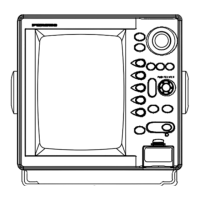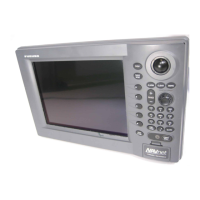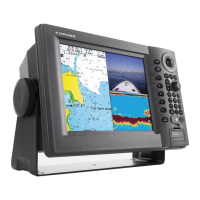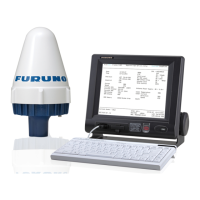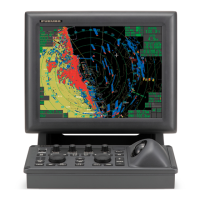Do you have a question about the Furuno 1830 and is the answer not in the manual?
Technical specifications for the radar scanner unit.
Technical specifications for the radar display unit.
Specifications of the radar transceiver module.
Guidelines for mounting the radar units, including environmental factors.
Detailed procedures for mounting the radar scanner unit.
Steps for correctly installing the radar display unit.
Instructions for connecting the power supply and grounding the system.
A checklist to verify all installation steps were completed correctly.
Steps for initial setup, warm-up, and basic configuration.
Procedure for aligning the scanner unit's heading mark.
Calibrating sweep timing and setting preset gain levels.
Adjusting tuning, panel illumination, and anti-clutter sea controls.
Adjusting magnetron voltage and measuring blind shadow sectors.
Description of controls and indicators on the front panel.
Description of controls and connections on the rear panel.
Procedures for powering on/off and initial system setup.
How to select different radar range scales.
Adjusting the receiver sensitivity for optimal echo display.
Adjusting the anti-clutter sea control to reduce noise.
Adjusting display brightness, tuning, and measuring target range/bearing.
Methods for measuring target bearings using cursor and EBL.
Tracking targets and assessing collision risks.
Displaying navigation data from external sources.
Factors influencing the minimum detection range of targets.
Understanding sea clutter and the effect of antenna height.
Factors influencing the maximum detection range of targets.
Understanding radar line-of-sight limitations and horizon.
Characteristics of radar targets and how to interpret the display.
Identifying land features on the radar display.
Identifying ship targets and understanding echo size variations.
Recognizing and dealing with false radar echoes.
Causes and reduction methods for multiple and side-lobe echoes.
Identifying and mitigating blind and shadow sectors.
Understanding indirect echoes and comparing radar to charts.
Methods for fixing the ship's position using radar range measurements.
Fixing position using radar range and bearing to a land feature.
Methods for fixing the ship's position using two radar bearings.
Evaluating collision risks by analyzing radar target movement.
Using radar beacons like Racon and Ramark for target identification.
How Racon and Ramark beacons function and appear on radar.
General precautions and guidelines for maintaining the radar.
Maintenance procedures for the scanner unit's radome and mounting.
Procedures for cleaning the display screen and replacing fuses.
User-level checks for common radar operational problems.
Complex troubleshooting requiring a qualified technician.
Procedure to measure magnetron current for suitability.
| Power Output | 4 kW |
|---|---|
| Interface | NMEA0183 |
| Display Size | 10.4 inches |
| Radar Frequency | 9410 MHz |
| Range Scales | 0.125 - 36 NM |
| Weight (Display Unit) | 4.5 kg |

